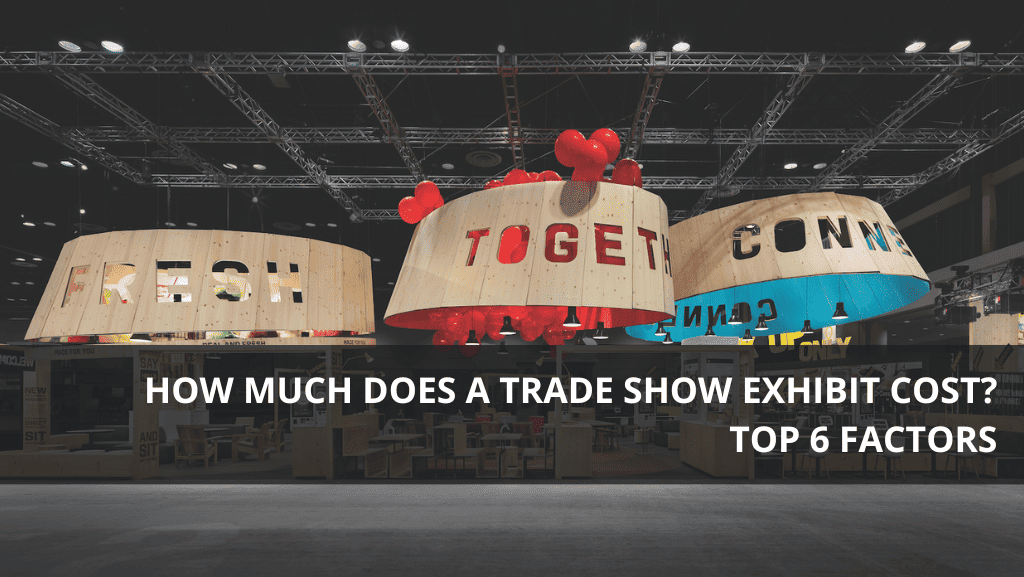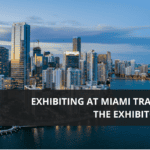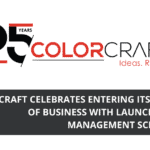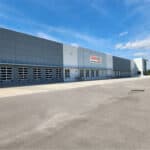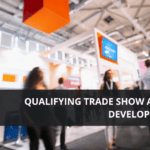Trade show exhibits are a valuable marketing tool for businesses of all sizes. They provide an opportunity to showcase products and services, connect with potential customers, and network with industry professionals. However, creating a successful trade show exhibit can be a costly investment. The overall expense will comprise of multiple factors, ranging from exhibit design, materials, and graphic elements to storage and installation. Let’s take a look at the top 6 factors that influence the cost of a trade show exhibit.
1. Size and Complexity of the Exhibit
The size and complexity of the exhibit are the most significant factors that impact the cost. The larger and more complex the exhibit, the more materials and labor required to build it, resulting in higher costs. A larger exhibit also requires more space on the trade show floor, which can affect the overall cost of exhibiting.
To minimize costs related to exhibit size and complexity, businesses should determine the minimum size booth footprint required to showcase products and services effectively, while limiting the number of components to reduce complexity. A rental exhibit may also be a more cost effective option. Be upfront with your trade show exhibit company about your budget and goals, and they will be able to best advise on booth configurations.
2. Custom vs. Modular Design
The design of a trade show exhibit is another significant factor that impacts its cost. Custom-designed exhibits tend to be more expensive than modular exhibits, which are pre-designed and can be easily assembled and disassembled. Custom-designed exhibits require more design and fabrication time, resulting in higher costs.
Modular designs, on the other hand, offer pre-designed components that can be easily configured to create a unique exhibit. This can help to reduce design and fabrication costs while still allowing businesses to create a custom exhibit that showcases their products and services effectively.
Exhibitors should consider the pros and cons of custom and modular designs carefully, and discuss their goals with their trade show exhibit company. Determine which design option best fits the budget while still meeting the marketing objectives for the exhibit.
3. Graphics and Branding
The graphics and branding of the exhibit also impact its cost. High-quality graphics and branding materials, such as vinyl graphics and digital printing, can add to the cost of the exhibit. However, investing in high-quality graphics and branding materials can create a more impactful exhibit that attracts more visitors and generates more leads.
To reduce graphic costs, businesses should consider which graphic sections are absolute “must-haves” to achieve the desired marketing goals of the exhibit, versus where a complex graphic can be replaced with a solid color panel. For example, can a complex printed image be replaced with solid branding colors? Similar to the other factors, your exhibit agency will be able to guide you in maximizing bang for your buck when it comes to graphics.
4. Installation and Dismantling
The installation and dismantling of the exhibit can also impact the cost of exhibiting. If the exhibit requires professional installation and dismantling, it can add to the overall cost of the exhibit. Professional installation and dismantling services can be beneficial as they provide a hassle-free way to set up and take down the exhibit, but they come at an additional cost.
Exhibitors should consider the pros and cons of professional installation and dismantling services. Determine if the additional cost is worth the convenience, and if there are other ways to reduce costs without compromising the quality of the exhibit. Depending on the complexity of the exhibit however, professional installation and dismantling may be a requirement.
5. Storage and Shipping
Shipping and storage are important factors that businesses must consider when planning a trade show exhibit. The cost of storing and shipping your exhibit can vary greatly based on factors such as size, weight, distance, and the type of transportation used. Additionally, there may be additional costs involved in handling and labor charges associated with the shipment and storage of the exhibit.
Exhibitors should identify a reliable and experienced transportation and logistics provider to manage shipping and storage. This can help to ensure that the exhibit arrives on time and in good condition, while also minimizing shipping and storage costs. Ask your trade show exhibit builder for recommendations, or if they offer storage services.
6. Additional Features and Services
Additional features and services, such as lighting, audiovisual equipment, furniture, and promotional materials, can add to the cost of the exhibit. These features and services can enhance the exhibit’s functionality and aesthetic appeal, but they will add to your total investment.
In summary, creating a successful trade show exhibit requires careful consideration of various factors that impact its cost. By understanding the top 6 factors that influence the cost of a trade show exhibit, and optimizing costs based on marketing objectives and budget allocation, businesses can create an impactful exhibit that generates engagement and resonates with potential customers. Trade show exhibits are a valuable marketing tool that can provide a significant return on investment when planned and executed effectively.
Ready to discuss your next trade show exhibit? Contact us today to get started!
